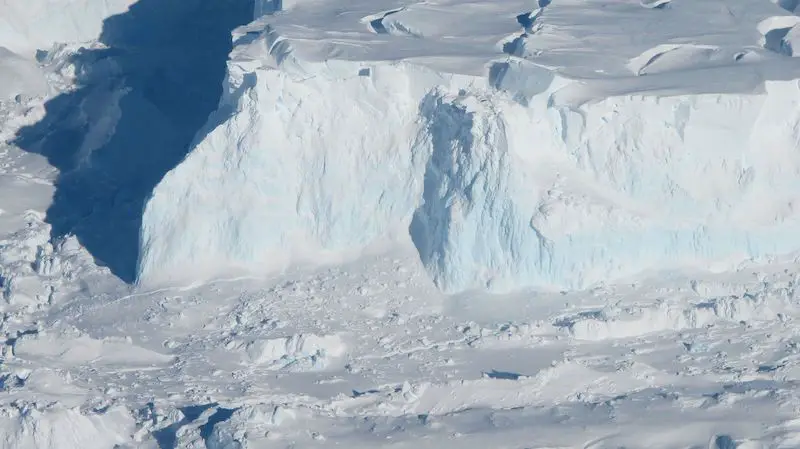If there is such a thing as a canary in the coal mine when it comes to climate change, it just might be the Thwaites Glacier in Western Antartica. This massive ice sheet has seen significant melt off in recent years, leading some to label lit the “Doomsday Glacier.” That name is derived from the fact that should Thwaites see a significant reduction in size, it could lead to rising sea levels across the globe. The Thwaites is also referred to as “the weak underbelly of the West Antarctic Ice Sheet” due to its fragile state and shrinking size in recent years. Now, new research indicates that the glacier may be in more danger than we thought and could disappear at a far faster rate than originally expected.
Late last year, researchers from New York University traveled to the Antarctic to inspect the health of the glacier. Part of that process involved drilling a 35 cm hole through the ice, reaching 600 meters below to what is known as the grounding line. That’s where the glacier meets the water sitting beneath. What they found was quite alarming. In a statement released last week, the NYU scientists indicated that they had found warm water underneath the Thwaites for the first time.
This discovery points to not only the warming temperatures of our planet’s oceans, but is explains why the Thwaites Glacier is in full retreat, sometimes losing as much as 2 km (1.2 miles) per year. The water temperatures are just two degrees above freezing, but that is enough to begin the process of melting away the ice that covers it, eroding an ice sheet that is tens of thousands of years old. That shift in temperature is also enough to create the fastest melt off of the Antarctic in recorded history, which is why there are growing concerns for sea levels to potentially rise around the world.
Just how serious could the situation become? Researchers say that the Thwaites Glacier is roughly the size of Great Britain or the state of Florida and could account for 4% of the global rise in sea leaves on its own. Of course, it could also set off a chain reaction in terms of Antarctica’s other glaciers, causing more melt off as a result. The researchers at NYU who made the report called the discovery a potentially “unstoppable retreat”
The data collected on this expedition to the Antarctic helps explain the mystery of why the glacier was showing such dramatic reductions in size but it also serves as dire warning of things to come. All of the signs are there for a catastrophic loss of ice in the Antarctic, which will have ramifications for coastlines—and the people who live along them—worldwide. At this point, it looks like it isn’t a question of “if” this will happen, but “when.” And more importantly, just how it will impact the planet.
Read more on this report here.
- Gear Review: The Xero Scrambler Mid is an Ultralight Hiking Shoe for Spring - March 1, 2023
- Gear Review: Yeti Roadie 48 Wheeled Cooler - August 18, 2022
- Kristin Harila Continues Pursuit of 8000-Meter Speed Record - August 16, 2022
